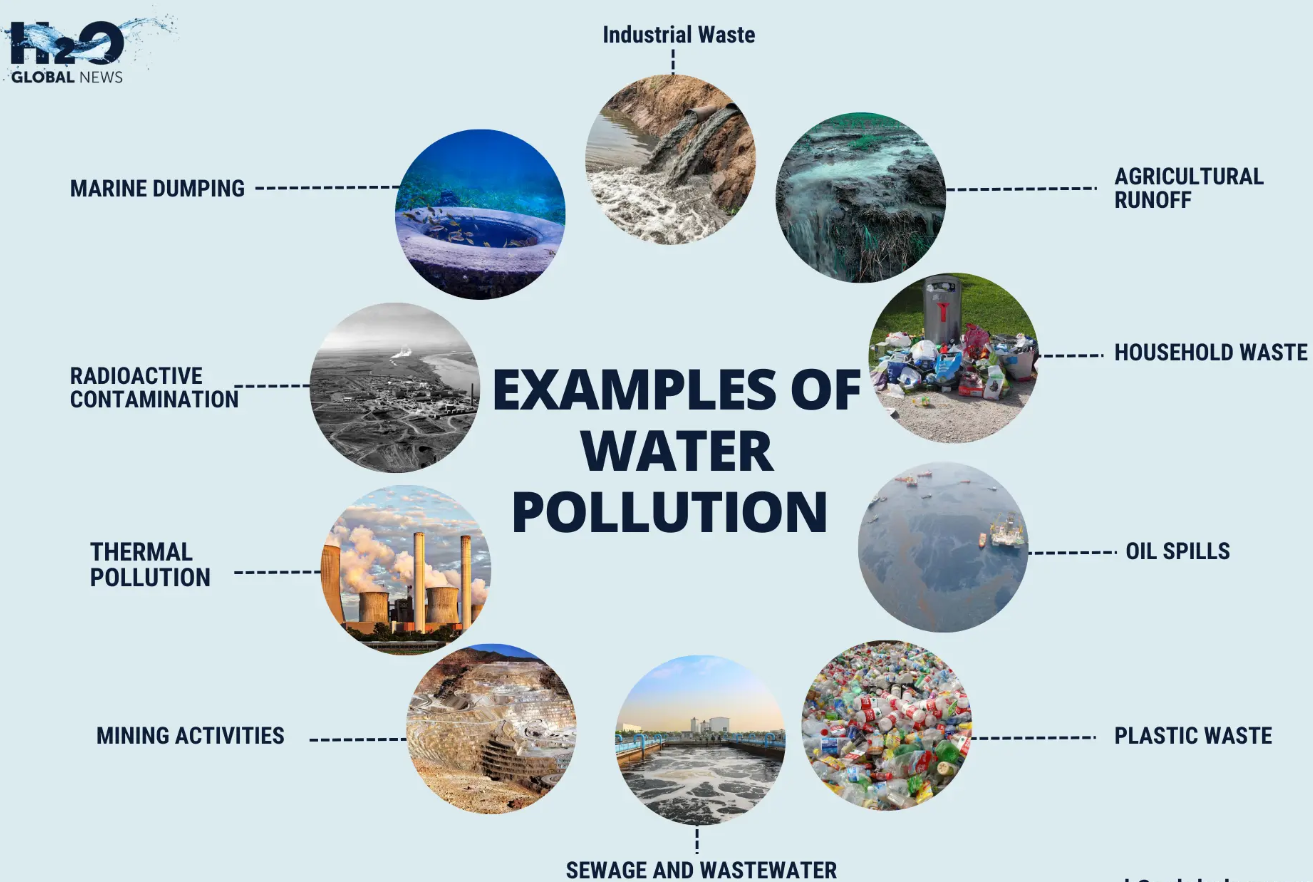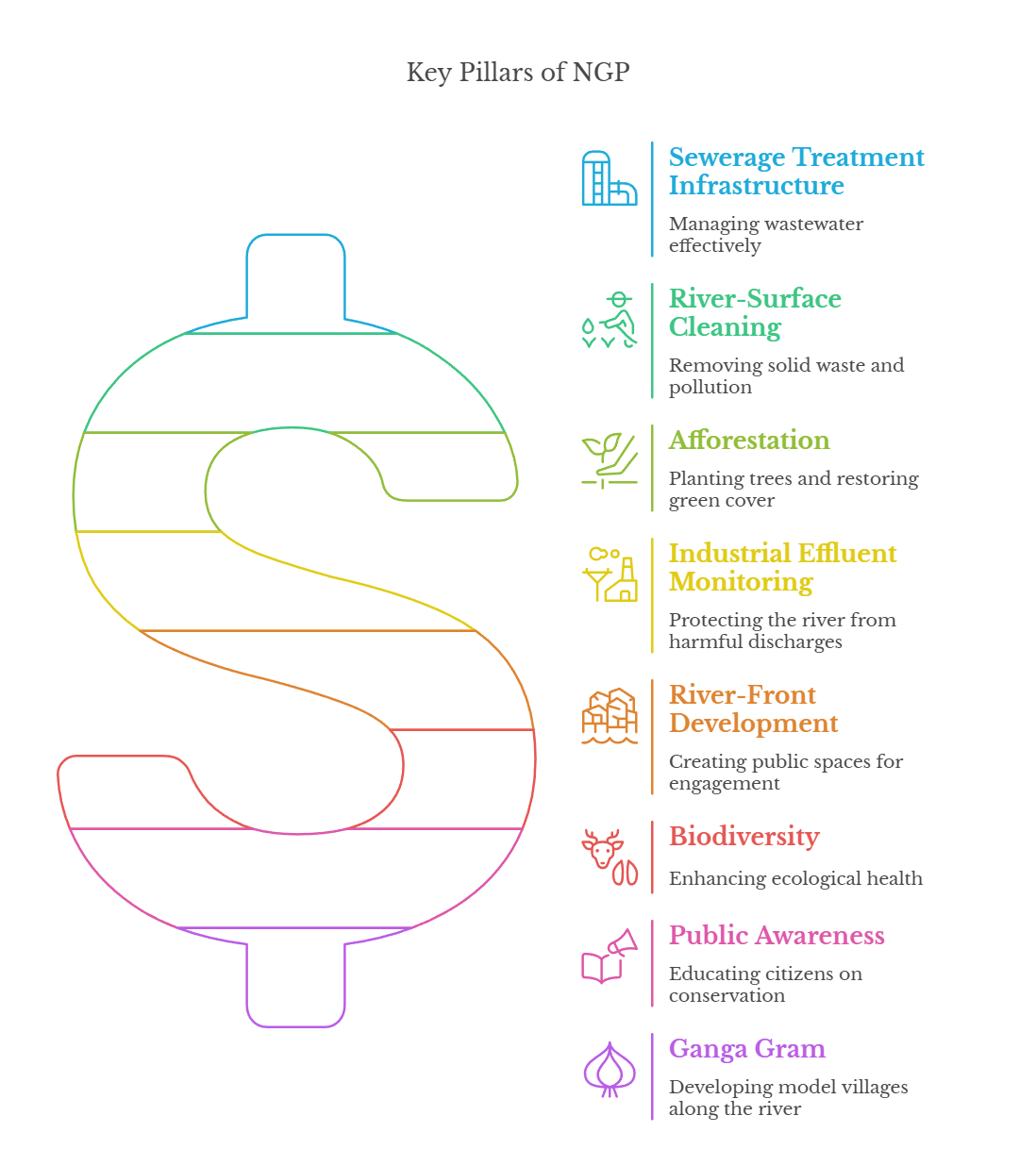Facts for UPSC Mains
Mitigating River Pollution in India
- 23 Sep 2025
- 6 min read
The Central Pollution Control Board (CPCB) study indicates a slight decrease in unfit and highly polluted river stretches (PRS) in India. However, the report highlights persistent challenges, with many PRS still needing immediate remediation.
- The polluted locations in a continuous sequence are defined as PRS.
What are the Key Findings of the CPCB on Polluted River Stretches?
- Marginal Overall Improvement: The total number of river locations unfit for bathing fell slightly from 815 (2022) to 807 (2023), and Polluted River Stretches (PRS) declined from 311 to 296.
- A Biological Oxygen Demand (BOD) greater than 3 mg/L indicates rising pollution and is considered unfit for bathing.
- BOD measures organic matter in water; low BOD indicates a healthy river.
- State-wise River Pollution: Maharashtra leads with 54 PRS, followed by Kerala (31), Madhya Pradesh & Manipur (18 each), and Karnataka (14).
- States with the most Priority 1 (highest urgency) PRS are Tamil Nadu, Uttar Pradesh, and Uttarakhand (5 each).
- Priority 1 rivers have Biological Oxygen Demand (BOD) levels above 30 mg/L and require immediate remediation.
- States with the most Priority 1 (highest urgency) PRS are Tamil Nadu, Uttar Pradesh, and Uttarakhand (5 each).
- Trend in River Cleaning: Since 2022, ‘Priority 4’ stretches fell from 72 to 45, while ‘Priority 2’ and ‘Priority 3’ stretches increased.
- The success of river-cleaning programs is measured by stretches moving from Priority 1 to 2, 2 to 3, and so on, up to Priority 5, which needs the least intervention.
What are the Key Factors Contributing to River Pollution in India?
Mnemonic: RIVER
- R-Ritualistic Pollution: Religious and cultural activities—idol immersion and cremation—release pollutants like Plaster of Paris, toxic paints, plastics, and floral waste, severely impacting rivers.
- I-Industrial Effluents: Industries like textiles, tanneries, and chemicals pollute rivers with toxic metals (lead, mercury, arsenic), notably the Ganga at Kanpur, Yamuna in Delhi, and Damodar in Jharkhand. Many bypass or dilute effluents, evading treatment standards.
- V-Vast Agricultural Contamination: Excessive fertilizers and pesticides cause agricultural runoff with nitrates and phosphates, triggering eutrophication and harming aquatic life, as in Punjab's Sutlej River.
- Stubble burning in Punjab and Haryana adds ash and residues, worsening river pollution.
- E-Environmental and Thermal Stress: Power plants, such as Farakka and other NTPC facilities, discharge heated water, causing thermal pollution that harms aquatic life.
- R-Reckless Solid Waste: As the world’s largest plastic emitter, India’s rivers, like Mumbai’s Mithi, are clogged with plastic debris, while unregulated landfills, such as Delhi’s Ghazipur, leach toxins into rivers and groundwater.
India’s Initiatives Related to River Cleaning in India
- Namami Gange Programme (NGP)
- Ganga Action Plan
- National River Ganga Basin Authority (NRGBA)
- Clean Ganga Fund
- Bhuvan-Ganga Web App
- Ban on Waste Disposal
What Strategic Interventions are Required for the Effective Mitigation of River Pollution in India?
Mnemonic: SACRED
- S-Strict Enforcement of Regulatory Measures: Strictly enforce the Water Act (1974), enabling CPCB/SPCBs to monitor water quality and take action against violators, while the National Green Tribunal (NGT) offers fast-track legal mechanisms to ensure river cleanup and the development of sewage infrastructure.
- A-Agricultural Chemical Control: Reduce agricultural runoff by promoting organic farming and integrated pest management, creating vegetative riverbank buffers, and providing subsidies for eco-friendly inputs.
- C-Community-Led Conservation: Engage local communities to improve solid waste management through collection, source segregation, and scientific processing, prevent riverbank dumping via fencing and patrolling, and enforce a ban on single-use plastics.
- R-Rigorous Industrial Regulation: Enforce Zero Liquid Discharge (ZLD) for polluting industries, install real-time Effluent Treatment Plants (ETPs) monitoring, and impose strict penalties for illegal dumping and non-compliance.
- E- Ecological Restoration Measures: Restore river health via desilting, catchment reforestation, wetland revival, and protecting floodplains from illegal encroachment to preserve natural purification.
- D- Digital Monitoring Network: Use AI, IoT sensors, GIS, and drones for continuous water quality monitoring and detecting illegal dumping, while supporting water-tech innovation.
|
Drishti Mains Question: Q. Examine the effectiveness of India’s river-cleaning initiatives and the challenges faced in implementation. |
UPSC Civil Services Examination, Previous Year Question (PYQ)
Prelims
Q. Which of the following are the key features of ‘National Ganga River Basin Authority (NGRBA)’? (2016)
- River basin is the unit of planning and management.
- It spearheads the river conservation efforts at the national level.
- One of the Chief Ministers of the States through which the Ganga flows becomes the Chairman of NGRBA on rotation basis.
Select the correct answer using the code given below:
(a) 1 and 2 only
(b) 2 and 3 only
(c) 1 and 3 only
(d) 1, 2 and 3
Ans: (a)
Mains
Q. Discuss the Namami Gange and National Mission for Clean Ganga (NMCG) programmes and causes of mixed results from the previous schemes. What quantum leaps can help preserve the river Ganga better than incremental inputs? (2015)








